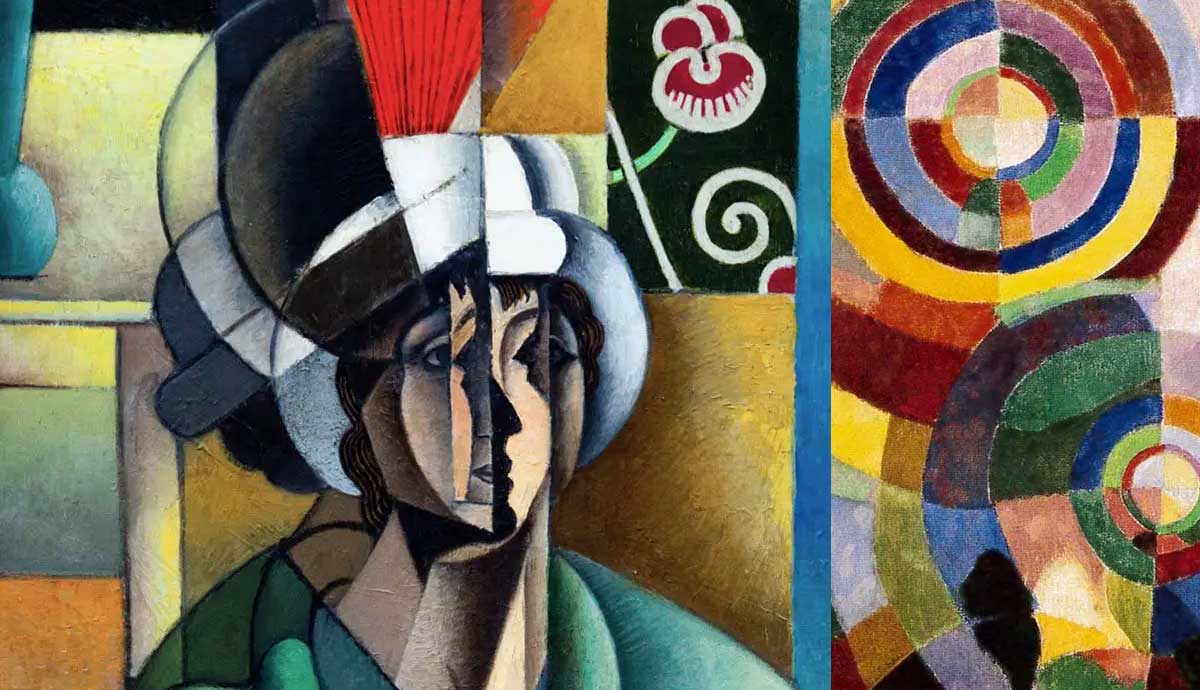Orphism was a pioneering, if short-lived art movement from the early 20th century, spearheaded by Robert and Sonia Delaunay in Paris. While Orphism emerged as a branch of Cubism, it was very much its own school of thought. In contrast with Cubist ideologies, Orphism was far brighter, livelier, more abstract, and more closely linked with the sonorous experiences of music. The movement only lasted from around 1911 to 1914, but its legacy was long, leading the way for the Op Art of artists including Bridget Riley and Victor Vasarely in the mid-20th century. We take a look through the key ideas that defined Orphism, and its relationship to the Greek God Orpheus.
Orphism Was a Branch of Cubism

Orphism emerged out of Cubism in the early 20th century. Many of the most active members of the Orphist movement started out as Cubists, before branching out in new directions. While Orphism shared with Cubism the same abstracted, distorted way of representing real world experiences, it was far more concerned with color. Indeed, Cubism is distinguished from other abstract movements of the era by its pared back, muted color schemes. Meanwhile Orphists painted with a plethora of rainbow hues that resemble the symphonic properties of music. As the movement progressed, many Orphists painted with radiating circular forms to suggest rays of light and the sensations of movement.
The Group Had a Small Number of Members

Only a small group of artists are associated with Orphism, most likely because it was such a short-lived phenomenon. While the formidable husband-and-wife team of Robert and Sonia Delaunay launched the Orphist movement, other prominent members included Franz Marc, Fratisek Kupka, Vladimir Baranoff-Rossine, Jean Metzinger and Albert Gleizes. The artists congregated as a group called the Section d’Or, united by a desire to create Cubist-like paintings in a different way from Pablo Picasso and Georges Braque.
Orphism and Georges Seurat

Get the latest articles delivered to your inbox
Sign up to our Free Weekly Newsletter
The color theories and pointillist painting techniques of Georges Seurat had a profound impact on Orphism. Like Seurat, Orphist painters experimented with the relationships of opposing colors from Eugene Chevreul’s color wheel. They painted them side-by-side to make each other appear brighter, and create shimmering optical effects in the eye of the viewer.
One of the Foundations for Orphism Was a Patchwork Blanket

French artist Sonia Delaunay had a significant stylistic breakthrough when she created a patchwork blanket for her child. She composed the blanket design with a series of angular, cut fabric scraps, arranged into a loose grid formation. While the blanket had somewhat humble origins, serving more as a functional object than a work of art, Sonia Delaunay later reflected how its design enlightened both her and her husband Robert Delaunay about how to create dynamism in a composition through the careful arrangements of color and form. Through working in design, Sonia was able to break free from the conventional shackles of painting and move towards pure abstraction. She recalled, “When it was finished, the arrangement of the pieces of material seemed to me to evoke cubist conceptions and we then tried to apply the same process to other objects and paintings.”
Guillaume Apollinaire Named the Movement After Orpheus

The renowned French art critic Guillaume Apollinaire was a strong supporter of Orphism, and it was he who first coined the term ‘Orphism’ to describe a loosely affiliated group of painters exploring similar stylistic tendencies. Apollinaire named the movement after the Greek god Orpheus, for his associations with music, poetry and enchantment. It was Apollinaire’s hope that naming the movement after this mystical, classical figure could capture some of the poetic, musical magic that he experienced in front of Orphist works of art.

